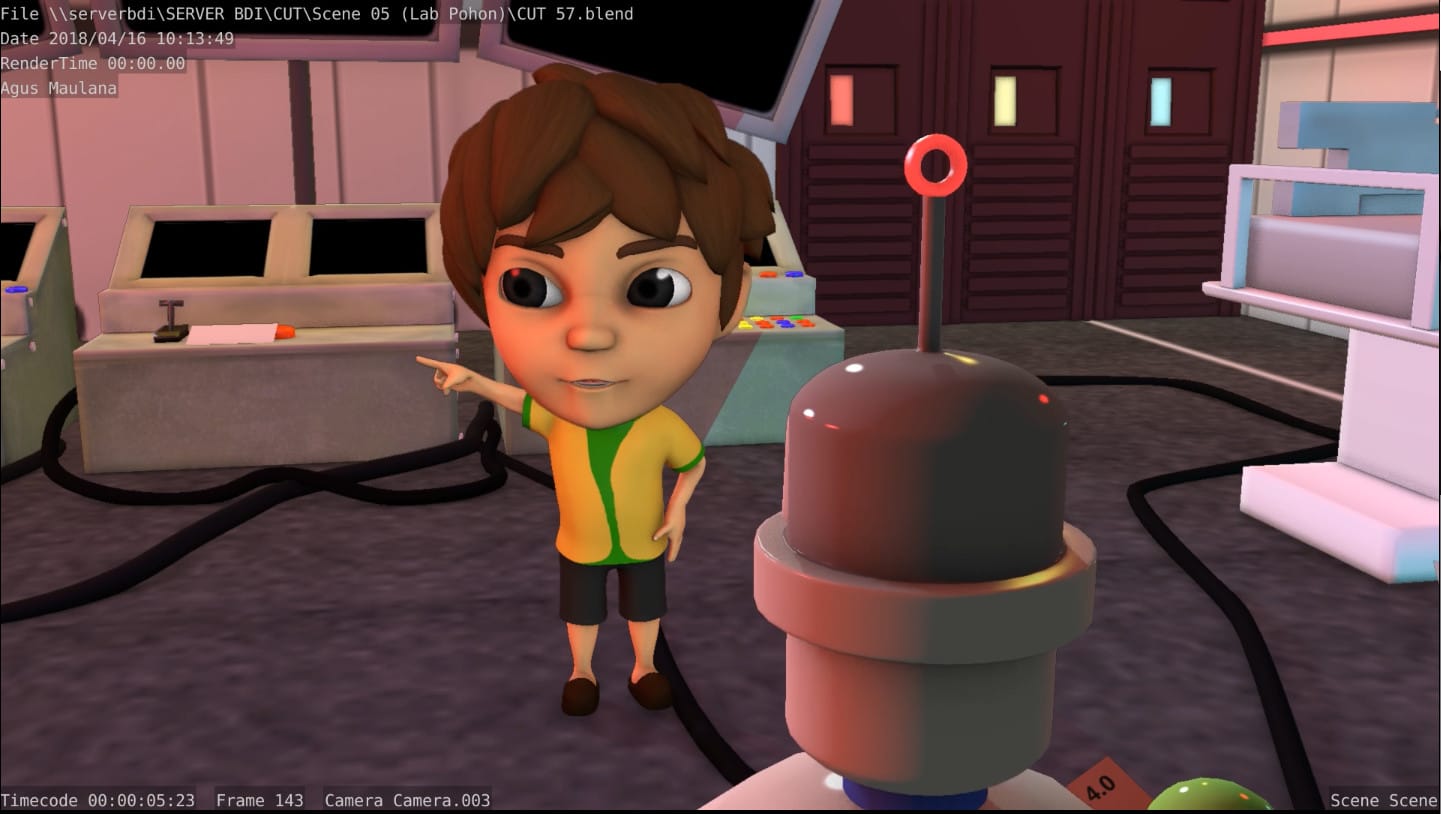
In simple terms, it’s flexible, powerful, and surprisingly easy to work with. Under the hood, Cycles is a cross-platform physically-based unidirectional path tracer that can run on CPU, GPU, and CPU+GPU hybrid mode in single-processor and multi-processor (CPU or GPU) configurations.
BLENDER 3D ANIMATION TV
It’s been used in a variety of films and TV shows, like Next Gen and Man in the High Castle, as well as countless commercials. Cycles RenderingĬycles is Blender’s production rendering engine. The current sculpting system is CPU-based, with decent multi-threading, and it relies on aggressive RAM caching to deliver consistent performance while working on high-poly models.īlender hits RAM capacity and CPU processing bottlenecks faster than other sculpting programs because of this, but it still delivers solid sculpting performance on the right hardware. The developers didn’t have time to implement all of the performance optimizations they wanted to before 2.8 hit release, but the features on the road map still show a lot of promise.īlender 2.9 and subsequent Versions offer new features beyond sculpting improvements as well. 3D Sculptingīlender’s sculpting system was partially refactored for version 2.8, shedding a lot of unmaintainable code. You’ll need all the power you can get to take advantage of things like OpenSubdivision and parametric modeling. This approach makes Blender a wonderfully undemanding tool for low-poly and mid-poly modeling, but you’ll still need a powerful workstation for high-poly work. Using the former for high-precision tasks - modifiers, shape keys, drivers, etc - and python modules, and the latter for things like geometry selection, viewport rendering, and overlays.

While it’s theoretically possible to use Blender without digging into its 3D modeling system, most users work with it extensively.īlender tries to split modeling workloads between the CPU and GPU. This versatility makes it hard to pick a single performance scenario that’s more important than the rest, but there are a few common categories that are important for every user.

It has modes dedicated to 3D modeling, 3D animation, 3D sculpting, 2D animation, rendering, shader editing, video editing, compositing, and even text editing! Otherwise, read on! How Blender Uses Your Hardwareīlender is a versatile program that has been used to make everything from movies to 3D-printed dentures.
BLENDER 3D ANIMATION FREE
If you already know what you’re looking for, feel free to skip ahead to our hardware recommendations or finished Blender PC-Builds. After that, we’ll show you some finished builds that are great for Blender users with different budgets.įinally, we’ll take a look at how Blender’s hardware requirements may change in the future and the things you can do to make sure your build will be ready when those changes happen. We’ll start out by taking a look at how Blender uses your computer hardware, and follow it up with a breakdown of what features you should look for when buying computer parts. The end result won’t differ too much from your usual gaming or workstation setup, but there are a few factors we’ll cover that can have a big impact on Blender’s performance. This guide will cover the ins and outs of building a computer tailored to fit Blender’s hardware requirements. It’s free, it’s open-source, and it’s incredibly flexible - if you have the right workstation.

Best Laptop for 3D Modeling and Rendering in Blenderīlender is a versatile digital content creation tool that has been used in a variety of high budget and low budget productions.Best Computer for GPU Rendering in Blender, AMD at roughly ~7100$.Best Computer for CPU Rendering in Blender, AMD at roughly ~3000$.Best Computer for Blender, Intel at roughly ~2000$.Best Computer for Blender, AMD at roughly ~1500$.

Best Computer for Blender, AMD at roughly ~700$.Best PC-Builds for Blender at different Price Points.


 0 kommentar(er)
0 kommentar(er)
